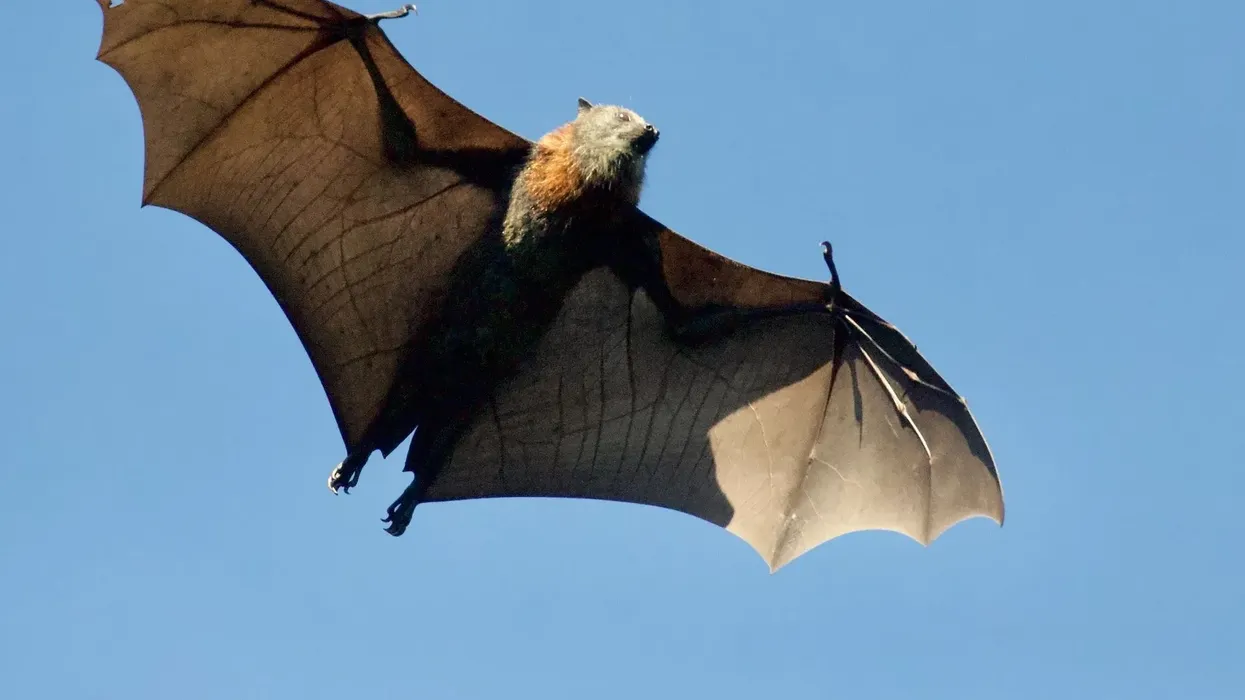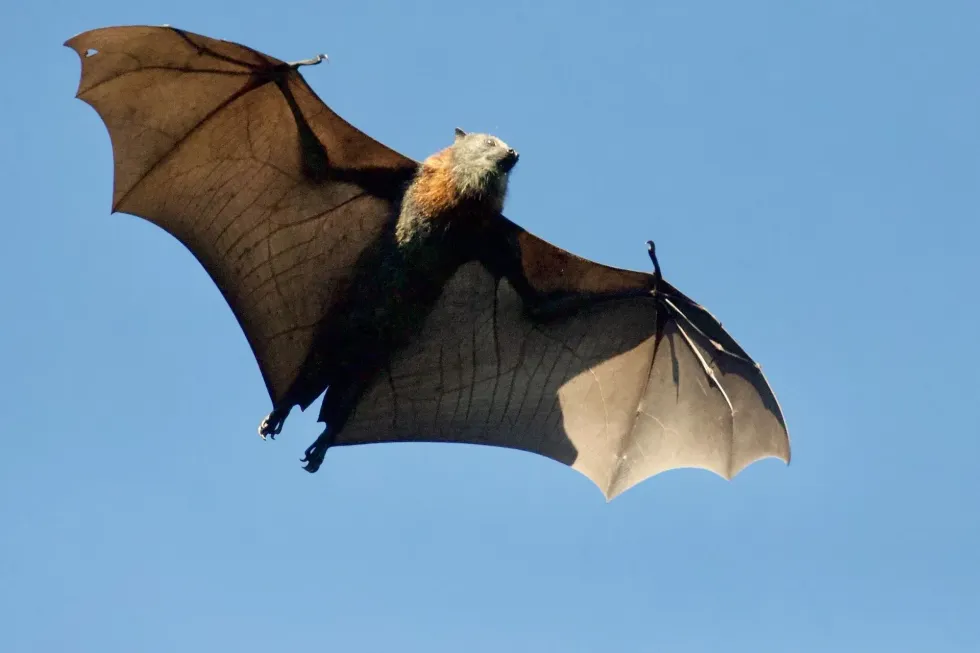These bats get their name from their long, mouse-like tail and belong to family Rhinopomatidae. They use their tails to help them balance when they are flying. Mouse-tailed bats eat small insects, such as mosquitoes and moths. They can also consume fruit and nectar.
Mouse-tailed bats live in colonies of up to 100 individuals. These colonies are usually found in dark, sheltered places, such as caves or abandoned buildings. Mouse-tailed bats roost during the day and hunt for food at night.
These little creatures are very interesting and deserve more attention! They are an important part of our ecosystem, helping to control the population of pests. The length of their body is 2-3.5 in (5 -9 cm). In a single night, mouse-tailed bats sometimes travel up to 12 mi (20 km) from their roost places.
Mouse-Tailed Bat Interesting Facts
What type of animal is a mouse-tailed bat?
The mouse tailed bat (Rhinopoma microphyllum) is a type of mammal, which comes under the order Chiroptera and family Rhinopomatidae. They are nocturnal creatures and use the technique of echolocation to travel or search for food at night.
What class of animal does a mouse-tailed bat belong to?
These small bats belong to the Mammalia class, order Chiroptera, and genus Rhinopoma. Whenever mouse-tailed bats roost, they frequently cling to the ceiling by their thumbs and also with their feet. They leave their roosts around dusk and begin their hunt for food.
How many mouse-tailed bats are there in the world?
The exact number of these bats is not known yet, but as they come under the category of Least Concern, their abundance is quite much in the dry regions of North Africa.
Where does a mouse-tailed bat live?
The Mouse-tailed bat prefers dry or extremely dry locations to live, and hence we can find them in the regions of southern Asia. They are also found in Senegal, Morocco, Egypt, Syria, Israel, Jordan, Saudi Arabia, Lebanon, Yemen, India, Socotra Island, Afghanistan, and Pakistan.
What is a mouse-tailed bat's habitat?
Lesser mouse-tailed bats are often found in the geographic locations of extremely dry or arid environments, varying from grasslands to deserts and dry woods. You can also spot them in urban locations at a dense tree cover or at some old construction site.
Who do mouse-tailed bats live with?
These bats come together and forage for food by using echolocation to produce different sound frequencies. These bats roost in wells, caves, pyramids, rock clefts, houses, and palaces.
They can be seen in both small and large colonies and have gregarious behavior. These colonies can have bats in the range of thousand to ten thousand.
They use their thumb and feet to hang. According to many kinds of research done on their roosting sites, it has been found that they use these sites only for a day, and the rest they go for another one.
How long does a mouse-tailed bat live?
The average lifespan of the mouse-tailed bat is about 15 - 20 years. Under a favorable environment or extremely hot conditions, they can even live up to 30 years.
How do they reproduce?
According to research, smaller mouse-tailed bats are polygamous, meaning they have more than one mate. The female lesser mouse-tailed bat has one child every year.
They are pregnant for 90 - 100 days when gestating during the reproduction process. The birth happened across ten days in a field survey of the lesser mouse-tailed bat in mid-December. At the age of five to six weeks, the young began to fly.
What is their conservation status?
The conservation statutes of these mammals are Least Concern. They are not really on the verge of extinction, but there are many geographic locations where they used to be found, but not anymore. The other species called MacInnes' mouse-tailed bat is vulnerable and could become extinct soon.
Mouse-Tailed Bat Fun Facts
What do mouse-tailed bats look like?
These small to intermediate mammals species have slightly different physical characteristics than other bats, they have long, thin tails that set them apart from other microchiropterans. The valvular nostrils have no counterpart in bats, although the little flap of a noseleaf matches the situation in some plain-nosed bats (Vespertilionidae). This slim, long-tail distinguishes all bats.
These bats are small to medium in size with large ears, ranging 2 -3.5 in (5 -9 cm) without the tail. The ears extend past the nose.
Their backs are normally gray-brown to dark brown, with a brighter underside. The noseleaf on the snout is tiny and rounded. Slits just above the nostrils may be opened and closed, the nostrils are valvular.

How cute are they?
These species are very little creatures but not very cute. Overall they may appear scary to small children.
How do they communicate?
Mouse-tailed bats use the technique of echolocation to communicate with other bats of their colonies. They produce sounds of different ranges to express themselves and warn their mates of any foreseen danger.
The echolocation of bats calls is made up of multiple harmonics, with the third containing the most intensity. The majority of the sound energy is in the ultrasonic region, with species-specific differences in frequency dominating the calls.
Foraging animals do not seem to be territorial, which may be due to the dispersal of their insect prey. Insects ranging from ants and beetles to termites, bugs, and moths make up their diet.
How big is a mouse-tailed bat?
These bats are smaller than the other members of the family. Their forearms range in length from 2 -2.5 in, and their body length is around 2.5 in (5.2 -6.4 cm). They are 0.4 -0.5 oz in weight (11 - 14 g).
How fast can a mouse-tailed bat fly?
Mouse-tailed bats hunt at night in open-air very high above the ground. With little prey dispersed across a broad area, the bats need to cover a large search area in order to find an insect. In a single night, mouse-tailed bats sometimes travel up to 12 mi (20 km) from their roost places.
How much does a mouse-tailed bat weigh?
The average weight of these small animals is around 0.4 -0.5 oz (11 -14 g).
What are the male and female names of the species?
There are no specific names for the male and the female species of these bats. Mouse-tailed bat evolution from a baby to an adult will take around seven weeks.
What would you call a baby mouse-tailed bat?
The young ones of mouse-tailed bats are called 'pups'. Every year, female bats give birth to one young. In around six weeks, the pups are fully developed and weaned. The reproduction cycles of these bats are determined by where they dwell and the species.
What do they eat?
The majority of these bats' diet consists of insects. By turning torpid, they may be able to survive the winter when there are fewer insects around. Lesser mouse-tailed bats have a diet that includes moths and beetles, which are flying insects. These bats store a lot of fat in their lower stomach and can go two months without eating.
Are they dangerous?
These bats are not dangerous to humans.
Would they make a good pet?
These bats will not make a good pet as they need the natural habitat of dry areas and forests to live, they will not thrive at homes.
Did you know...
Lesser mouse-tailed bats consume insects that many humans consider pests.
There are signs that the population of these bats is diminishing as a result of human activity. Reasons for the population drop include destroying these bats' forest habitats, altering their roosting spots, and introducing enemies of these bats, animals that kill them for food, into a region.
Types of mouse-tailed bat
There are six species of this small mouse-tailed bat of the same genus. They are R. cystops, R. hadramauticum, R. hardwickei, R. macinnesi, R. microphyllum (great mouse tailed bat), and R. muscatellum.
How do mouse-tailed bats use their tail?
They use their tails to communicate and feel their way while walking and flying.
*We've been unable to source an image of mouse-tailed bat and have used an image of flying fox of same order instead. If you are able to provide us with a royalty-free image of mouse-tailed bat, we would be happy to credit you. Please contact us at hello@kidadl.com.
**We've been unable to source an image of a mouse-tailed bat and have used an image of a flying fox of same order instead. If you are able to provide us with a royalty-free image of mouse-tailed bat, we would be happy to credit you. Please contact us at hello@kidadl.com.









